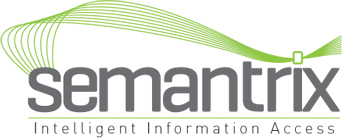TopQuadrant’s TopBraid Enterprise Vocabulary Net (TopBraid EVN) ![]() is a web-based solution for simplified development and management of interconnected controlled vocabularies. It supports business stakeholders who need to collaborate on defining and linking enterprise vocabularies, taxonomies, thesauri and ontologies used for information integration, customization and search.
is a web-based solution for simplified development and management of interconnected controlled vocabularies. It supports business stakeholders who need to collaborate on defining and linking enterprise vocabularies, taxonomies, thesauri and ontologies used for information integration, customization and search.
Enterprise Vocabulary Management has become an essential part of effective business information management. Creating centralized reference vocabulary and taxonomy repositories is one common approach, however the governance model is often complex and unsustainable.
To support the business needs of complex, distributed enterprises, business practices and technology/tools are evolving from Reference-only (text, models), through Interoperable (standards based) to Executable (federated, model-based, semantic- enabled).
Semantic web technology makes it easier to aggregate and analyze vocabularies through its capabilities for expressing, querying and federating information.
Key Features:
- Flexible Data Model – Ability to define and use any number of custom attributes and relationships
- Vocabulary Editing – Cloning, merging, repositioning and re-numbering of concepts; global edit operations for selected groups of concepts
- Search – Simple lookups and advanced search, tree and list views, visual graph exploration and query
- SKOS – Built-in support for all standard SKOS attributes and hierarchical, associative and equivalency relationships
- Automatic processing – Ability to create custom validation rules and automated script processing via SPARQL Rules and SPARQLMotion; SKOS and OWL rules and constraints ready to use out of the box
- Import/Export – Import/Export from RDBMs, RSS feeds, spreadsheets (CSV), XML, SPARQL endpoints, RDF and OWL
- Audit Trails – Every change is logged and time stamped, change history can be searched, changes can be rolled back if desired
- Unlimited Work-in-Progress Copies – Virtual work-in-progress copies of vocabularies allow parallel development of versions and enable controlled publishing, review and approval workflow
- Impact Analysis – Ability to query and create longitudinal analysis on any aspect of the vocabularies
- Role-based Access Control – Ability to define view-only, edit and manage roles for each vocabulary and for the individual working versions of a vocabulary
- Reporting – Built-in reports for hierarchy exports, spell checking, constraint violations and graph statistics Advanced query-building tools and reporting through graphical interfaces
- Merging – RDF standard universal identifiers provide easy “hooks” for merging vocabularies
- Systems Integration – Integrate with existing enterprise or vocabulary management systems via Web Services interfaces and APIs
- Rich Web Interface – Types (classes), properties and instances can be defined in an intuitive web-based system that supports drag and drop, autocompletion and rich text editing
- Customizability – On-the-fly creation of customized user interfaces that can meet the needs of each user group
- Open Architecture and Standards – External data need not be transformed into a proprietary schema. TopBraid EVN offers native support for RDF, OWL and SPARQL
- Enterprise-ready – Scalable and robust architecture with DBMS deployment (choice of relational and RDF databases) with LDAP integration for access control
- For a detailed list of the capabilities, see the EVN User and Reference Guide. The screenshot tour shows many of the key features in action
See also:


